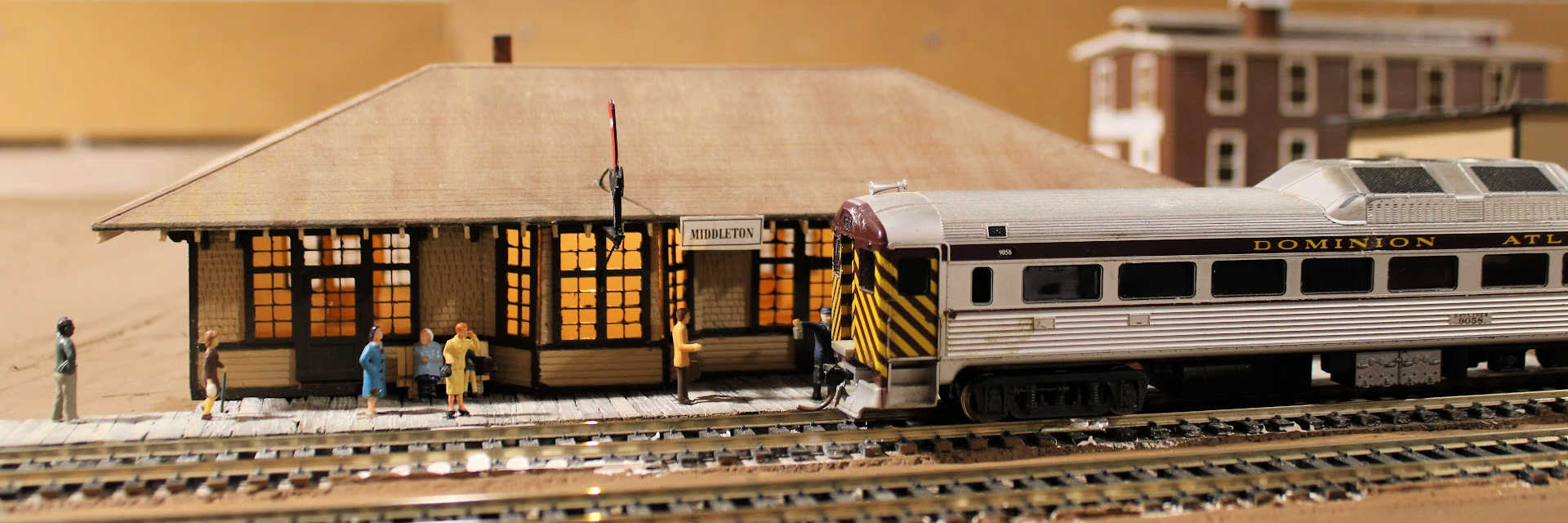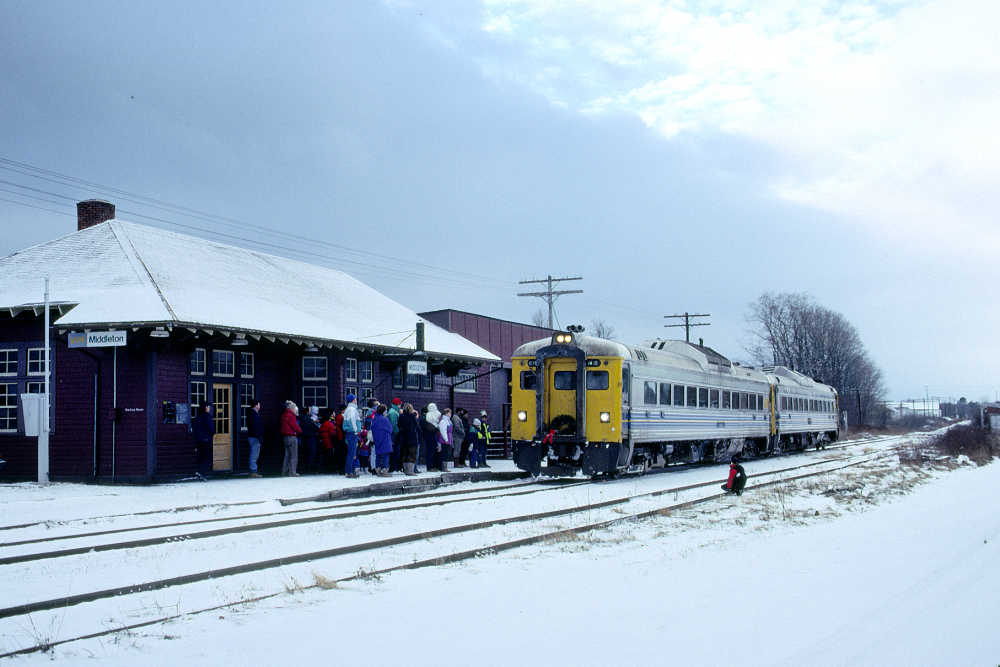
Middleton Station
A fire completely engulfed the Middleton railway station on June 21, 1916. The three-story building dating from 1890 was destroyed in the blaze.
The importance of the railway junction of the Canadian Northern and Dominion Atlantic railways at Middleton to the winning of the Great War made a replacement station imperative. Accordingly, the management of the Dominion Atlantic Railway (DAR) reached out to the parent Canadian Pacific Railway. The CPR responded with a standard plan for a station that would serve the companies for almost another 75 years.
The new station was completed for the DAR in just over six months and opened for business on Monday, January 8, 1917. It measured 26’ wide and 70’ long encompassing, from east to west, a general waiting room, office, ladies’ waiting room, and a baggage room. A separate freight shed stood to the west.
The earlier station was considerably larger reflecting the optimism of the day. The railways built in anticipation of significant traffic from the iron mines at nearby Torbrook and the growing forestry and agricultural industries. A wye connection was built by the Nova Scotia Central and maintained by them and, ultimately CN, until their 1984 abandonment. As the late-arriving railway, the Nova Scotia Central was responsible for maintaining the connection and crossing switches. Similarly, the railways would have negotiated an arrangement to share the costs of operating the Middleton station, originally owned by the Windsor and Annapolis Railway. The shared costs included DAR personnel who would have issued train orders and sold tickets on both lines. Ownership passed to the DAR on its formation on Monday, October 1, 1894. The Canadian Pacific Railway leased the DAR for 999 years on Monday, November 13, 1911, and progressively presented its corporate image notably after the demise of steam trains in the late 1950s.
An even earlier station measuring 22×40’ had been built by the Windsor and Annapolis that began to serve Middleton in 1869. The railway may have constructed the small structure as late as 1873.
Changes came to our station in 1962 or shortly thereafter as the ladies’ waiting room and baggage room on the west end of the station were closed. We believe that the freight shed was moved to the east and grafted onto the existing station. Astonishingly, the ladies’ waiting room was filled with concrete up to the level of the floor of the freight shed. A small amount of additional floor space was gained and steps were installed to reach the office. At this time the railway moved to the use of trucks for local express and freight delivery. Our station became a focal point for this activity.

Photo by Bill Linley
On Sunday, August 19, 1956, two new self-propelled DAR Dayliners ended steam passenger service. Similar Budd cars continued in service through the transition to VIA Rail Canada effective Sunday, October 29, 1978, until the demise of VIA service on Sunday, January 14, 1990. We have selected the summer of 1956 as the period for our interpretation of the station. Funds from a private foundation are funding the restoration of the general waiting room to this period. Already, we have removed an equipment room located at the south end of this room.
In April 1990, CP ended freight service and abandoned the line to the Province of Nova Scotia which established the Harvest Moon Trailway on the former roadbed. The 110-kilometre (68-mile) Trailway links the UNESCO World Heritage Site of Grand Pre through Middleton to the historic seaside town of Annapolis Royal. The Station was leased to Future View as a site for helping challenged individuals.
On January 21, 2021, the Province of Nova Scotia conveyed title to the station and surrounding lands to the Middleton Railway Museum Society.
Header Photo by Lee Hopkins

